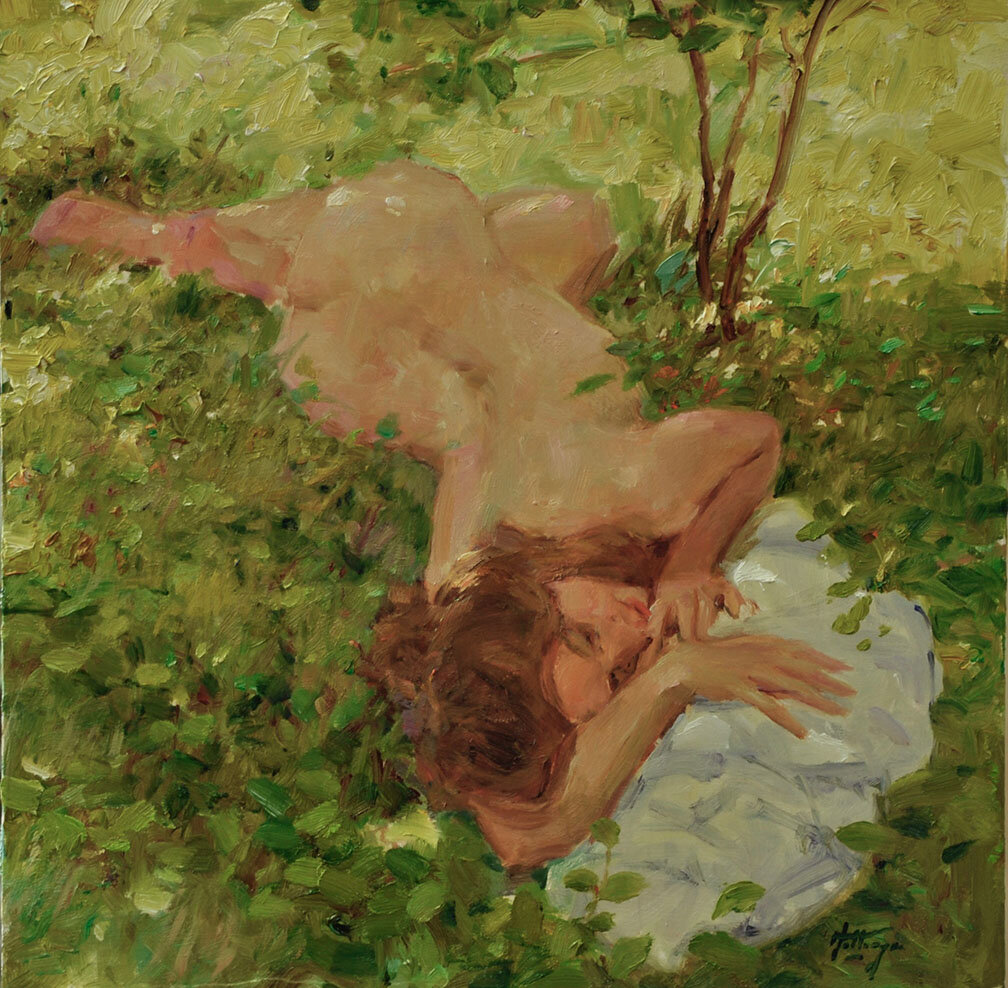I like paintings that spark the question, "what’s the story here?” Some paintings present a clear story for our imaginations, while others ask the viewer to think and ponder. The subject alone does not always create intrigue. It sometimes takes real dedication and skill that the artist has developed to do so. Sometimes we recognize the artists skill when viewing a painting and then the question of, “Why would someone with such talent, such skill, waste them on such an ordinary subject?”
Watching someone stand in front of a painting for more than a brief moment, I see a successful painting by a successful artist. The longer a painting can hold a viewer's attention the better a painting it is. Is it the subject? Or the skill of the artist holding the viewer's attention? …Am I over thinking why people look at art?
I also wonder why people do not look at art. I see people gazing at the hors-d'oeuvres table for far longer than they stood looking at the art. Why are people at art exhibitions if it isn't to look at the art? Exhibitions are great events to meet old friends and associates at and catch-up on what has been happening. I totally understand hors-d'oeuvres and conversations are going to take place at art openings, but what about the art? Has it failed to talk to the people at an art exhibition, too?
Each painting I begin bringing to fruition, I consider how people will react to the subject and how I will handle the painting process. My student, who likes to tell me the story behind what she is about paint first, always has interesting tales to tell about her subjects. Trouble is her paintings do not always carry the same interest that her story of the subject does. I like to think my coaching helps her get her paintings raised to a level that tells the story on their own, or at least causes people to ask "what is the story behind this painting?”




